

| A modern atlas of the Shieldbugs of VC56 Nottinghamshire |
| .. |
| Shieldbugs are popular with many entomologists.
On the whole, they are large and conspicuous insects and
as a number of species readily occur in urban parks and gardens, they
are frequently noticed by the
public. The arrival of websites such as iRecord and social media platforms such as Facebook and Twitter, has meant that those with little knowledge of insects can photograph their subject, upload it, and have an identification within minutes. As a direct consequence, more records than ever before filter their way through to the various recording schemes around the UK. Modern invertebrate recording is now less likely to be restricted to just a few entomologists per county, in the way it often was 50 years ago. For instance, our understanding of species distribution has become much better in recent years and a more accurate picture of their distribution is becoming possible following the increase in records. What next for Nottinghamshire? In VC56 Nottinghamshire, Shieldbugs have done extremely well and the commonest species can be found easily enough with little effort. There are currently 23 species with confirmed Nottinghamshire records, with nine having been added to the county list since 2000 and a number of others are probably on their way here. Both Brassica Bug and Tortoise Bug were recently added to the VC56 list in May 2019 by Darren Matthews, with Darren finding both species within the space of a week! Southern Green Shieldbug Nezara viridula (Linnaeus, 1758) has already been reported from the Rufford area in September 2017. As far as we know, the record has not been verified by the county recorder, but it is interesting to note that Southern Green Shieldbug was recorded in Yorkshire for the first time in 2018 (Rhodda, A.). |
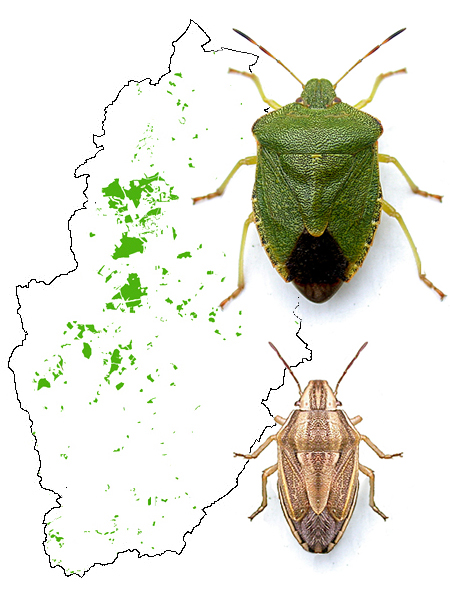 |
|
| ...... | ||
|
Lincolnshire and Leicestershire have yet to record it
and of those counties adjacent to Nottinghamshire, Leicestershire
(with listed records coming via the
Naturespot website),
perhaps gives us the best picture of what species to look out for in
the next few years.
Mottled Shieldbug Rhaphigaster nebulosa (Poda, 1761) was first recorded from the London area in 2010, following an expansion of range on the near continent. It was subsequently found to be well-established in parts of south London during 2011 and there have been further records of it since. In 2018, there was a surprising record from Magna Park (Mabbett, C.) near Lutterworth in Leicestershire. This record may have been accidental, following transportation from the London area, or even directly from the continent and certainly serves to remind us that just about anything can turn up anywhere. |
||
| Species
accounts and distribution maps The following distribution maps are up to date as of January 2022. Our thanks go to the following people and organisations who have contributed their records. Keith Alexander. Charlie Barnes. Allan and Annette Binding. John and Denise Bingham. Paul and Helen Brock. Pauline Bradford. Dave Budworth. Adrian Dutton. Jim Flanagan. Andy Godfrey. Wil Heeny. Rob Johnson. Peter Kirby. Keith and Belinda Lugg. Darren Matthews. Trevor and Dilys Pendleton. Richard Rogers. Chloe Ryder. Tim Sexton. Meg Skinner. Peter Smith. Sean Tobin. Martin Warne. Stuart Warrington. Derbyshire and Nottinghamshire Entomological Society (DANES). Netherfield Wildlife Group. Nottingham Biological and Geological Records Centre (NBGRC). Nottingham City Council. Nottinghamshire Wildlife Trust. Sherwood Forest Invertebrate Directory 2014. Sherwood Forest Trust. Sorby Natural History Society. The National Trust. |
|
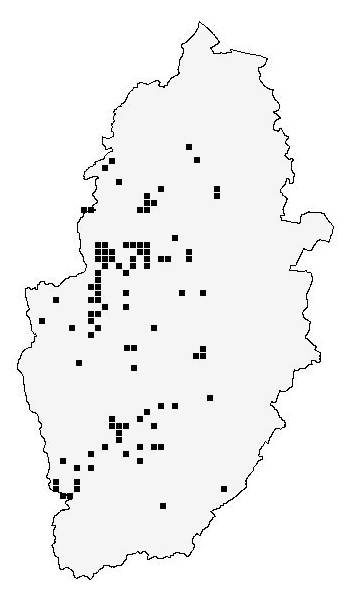 |
||||||||
| ... | |||||||||
| Beating is the easiest method of finding Hawthorn Shieldbug, but both adults and nymphs are fond of basking on the upper surfaces of leaves for long periods. Like a number of other species, the adults are occasionally attracted to MV light. | |||||||||
|
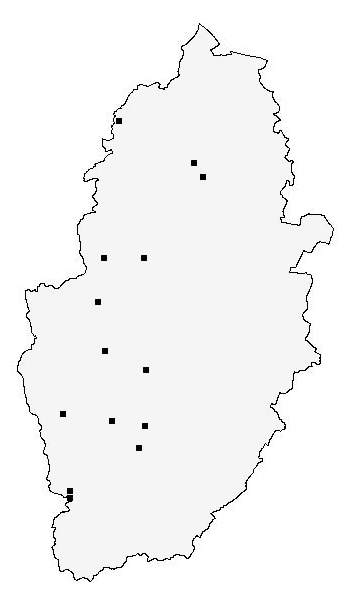 |
||||||||
| ... | |||||||||
|
A number of records are now being reported annually and its range is
certainly increasing. Recent sites to record it include Attenborough,
Ravenshead, Market Warsop and the grounds of Nottingham City Hospital,
so it is probably widespread in Nottinghamshire and just under-recorded.
The present distribution of Juniper Shieldbug is interesting and the westerly bias to the known records showed in the above distribution map, would suggest colonisation from western counties. But in all honesty, its present distribution probably just reflects the more densely populated areas of the county. Even single conifers have been found to hold small populations and it has subsequently proved to be more common than had originally been thought to be. Beating the foliage of both Lawson's Cypress and Italian Cypress growing in gardens or parks, is the best method of finding this species. |
|||||||||
|
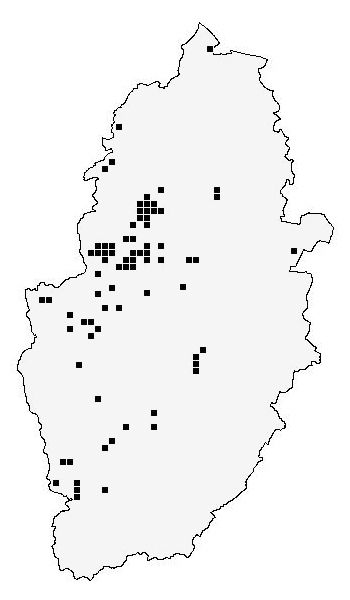 |
||||||||
| ... | |||||||||
| It has
been regularly recorded from Southwell, despite
there being a distinct lack of records from northern and eastern parts
of Nottinghamshire, especially anywhere east of the Trent Valley. We
have no records from the towns of Newark, Retford or Worksop, but can
find no reason why it should not be present. Beating the foliage of Birch will soon reveal nymphs or adults (depending on time of year) and is the best method of finding this species. Visual searching of foliage is more time consuming, but still worthwhile. As with most other species, both adults and nymphs spend a great deal of time sat on the upperside of foliage. |
|||||||||
|
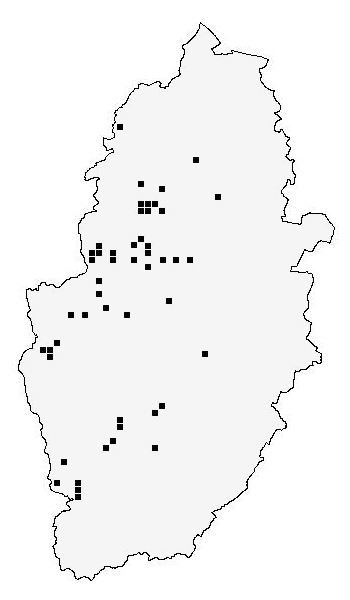 |
||||||||
| ... | |||||||||
| This is another species easily found by beating Birch foliage. Spring is probably the best time to try this, as Parent Bug is one species in which the females show brood care and the nymphs remain with the female for some time, but visual searching can often be equally as productive. | |||||||||
|
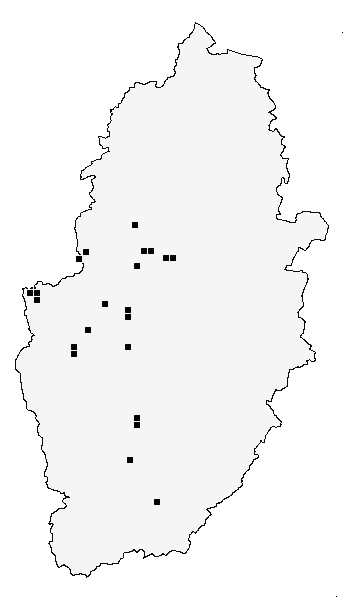 |
||||||||
|
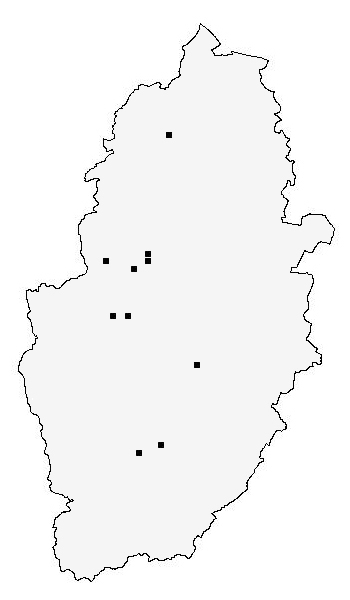 |
||||||||
| ... | |||||||||
|
Legnotus limbatus is a ground living
species, feeding on Lady's Bedstraw (Galium verum), but not
restricted to this, and is found on other Bedstraws and Goosegrass (Galium
aparine). Nottinghamshire's five recent
records have come from a variety of sites, suggesting that it is
probably more widespread in the county than current records would
indicate. Drier sites are known to be favoured, so the sandy soils of the Sherwood Forest and Clumber Park areas, would seem to be ideal. Sweeping grassy sites containing Bedstraws, would be the most productive method of finding this species, but it has subsequently proved very difficult to find, even at sites where it is known to occur. |
|||||||||
|
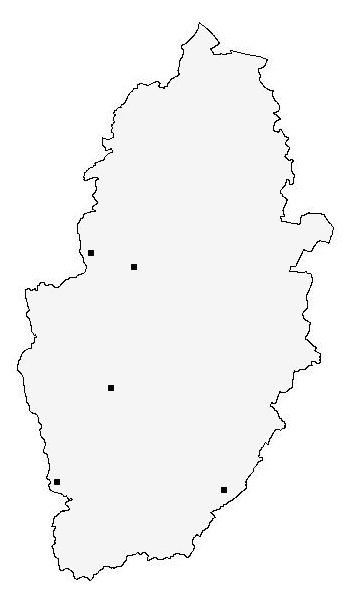 |
||||||||
| Two different
individuals were found on consecutive dates, during an invertebrate
survey on the site of a number of former wartime airfield buildings
at Langar
(Pendleton, T.A. and Pendleton, D.T.) in May 2015. The
site had significant areas of bare, concreted ground, linked by narrow
access roads, allowing Forget-me-not to grow profusely in places, which
seems to be key to finding this species in Nottinghamshire. The county's most recent records are from a Toton garden, which is well planted with Forget-me-not and from where it has been recorded annually each Spring since 2008 (Lygo, B.). |
|||||||||
|
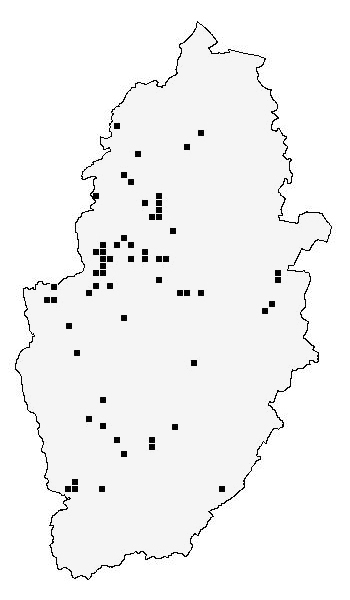 |
||||||||
| ... | |||||||||
| At the present time (Spring 2019),
there are no other species, with which there could be any confusion. But
it is worth bearing in mind that Rambur's Pied Shieldbug will
almost certainly spread north from its current stronghold in Kent.
Potential confusion with Rambur's Pied Shieldbug: Extremely similar to Pied Shieldbug, Rambur's Pied Shieldbug first colonised the UK in 2011, when it was discovered at two sites in Kent. This shieldbug has also been found at several other Kent sites, at Canterbury (T. Bantock) and by ourselves at Dartford, during an invertebrate survey of a former landfill site. Already believed to be widespread in Kent and now probably north of the River Thames in Essex. Rambur's Pied Shieldbug is associated with Black Horehound (Ballota nigra) so plants growing in south Nottinghamshire, could well be worth searching in the coming years. |
|||||||||
|
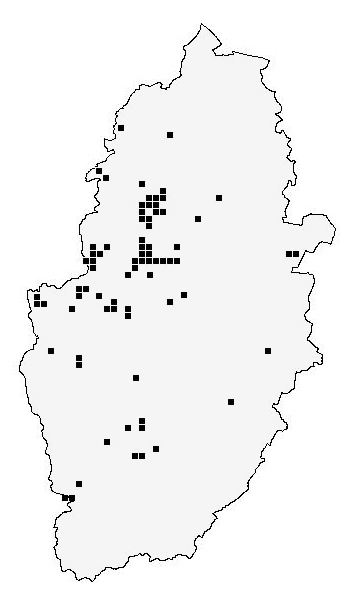 |
||||||||
| Bishop's Mitre
appears if anything, to have become
increasingly common in Nottinghamshire over the past 10 or 15
years, but it has not been widely recorded from sites lying
along (or east of) the Trent Valley There are records from the
Nottinghamshire Wildlife Trust's Spalford Warren reserve, from Newark
and Netherfield down to Attenborough NR, but it appears to be genuinely
less common along the River Trent. Sweeping areas of long grass with a net, is the easiest method of finding this species, but the adults can be found by visual searching, as they are quite conspicuous on the flowerheads of various grasses during the Spring and Summer months. |
|||||||||
|
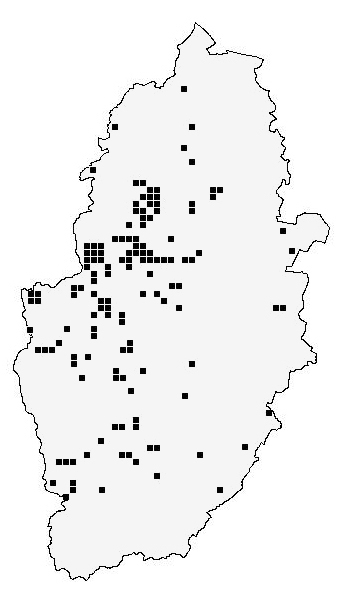 |
||||||||
| ... | |||||||||
| Both adults and nymphs are most often found on a range of herbaceus perennials, being especially attracted to Burdock (Arctium sp), Great Mullein (Verbascum thapsus) and Thistles (including Cirsium vulgare and Cirsium arvense). Hairy Shieldbug is an attractive species and easily found by either visually searching the host plants growing in a variety of situations, or by sweep netting low vegetation. | |||||||||
|
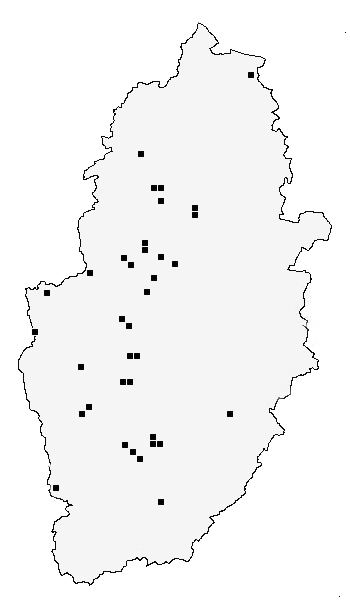 |
||||||||
|
The northerly range expansion has gained
pace over the past few years, and Nottinghamshire's first
records coincided with records from
Lincolnshire
(Gray, M.) and in South Yorkshire
(Batty, S.). Subsequent Nottinghamshire records
came
from Center Parcs
(Hill, M.)
and Sherwood Forest CP in May 2020 and it's range
expansion across the county has been remarkable since. It should be expected at many sites throughout the county. Large numbers were found on Garlic Mustard growing along a section of old road near Appleyhead Lodge at Clumber in 2021. Has become common in Nottinghamshire extremely quickly. The adults come in several colour forms, where the white markings can be replaced by either red or yellow and are found on a range of Brassicas including plants such as Garlic Mustard and Horse Radish. |
|||||||||
|
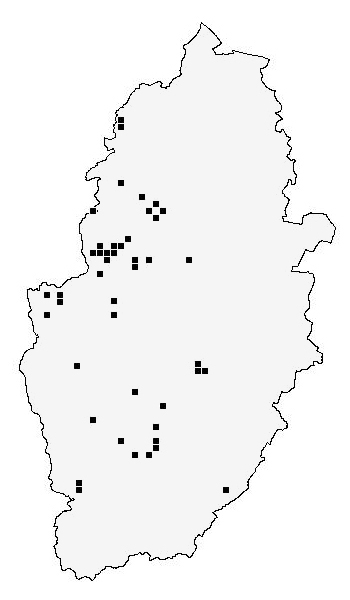 |
||||||||
| Woundworth Shieldbug is in inconspicuous species, although often found in numbers where it occurs. Favoured habitats are sheltered woodland rides, the edges of woodland and along hedgerows where Hedge Woundwort (Stachys sylvatica) grows. Occasionally, White Dead Nettle (Lamium album) is used, but we have found this to be the least preferred of the two. | |||||||||
|
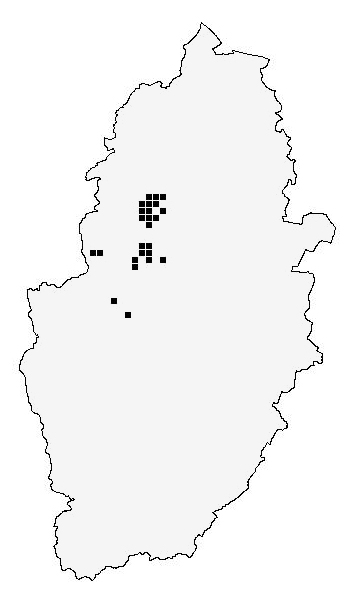 |
||||||||
|
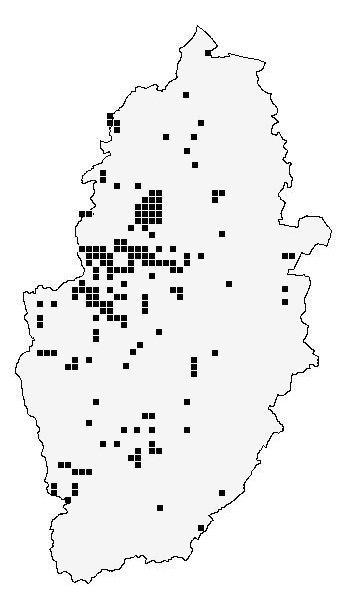 |
||||||||
|
In truth, this is a much more widespread species which should be expected anywhere. As already mentioned, it is common in many gardens, but is under-recorded from the Nottingham area and anywhere east of the River Trent. Potential confusion with Southern Green Shieldbug: In Nottinghamshire, Green Shieldbug has always been unlikely to be mistaken for any other species. But another green-coloured Shieldbug has started to increase its UK range and this could lead to some identification difficulties in coming years. The Southern Green Shieldbug Nezara viridula (Linnaeus, 1758) started to show signs of moving northwards from the London area a few years ago. Then towards the end of 2018, came the news that it had been found in Yorkshire (per Rhodda, A.) and more research showed that the NBN Atlas was actually listing a number of records stretching north-west as far as Cheshire. No records were given from any of the neighbouring East Midlands counties, or from Yorkshire. But, among a recent crop of records we received at the end of 2018, was a report of Southern Green Shieldbug from the Rufford area of Nottinghamshire on September 3rd 2017 at SK6562. At the moment, we have no idea whether the record is genuine, or just a misidentification, but recorders should be aware that this species could well be in Nottinghamshire and should be looked for. |
|||||||||
|
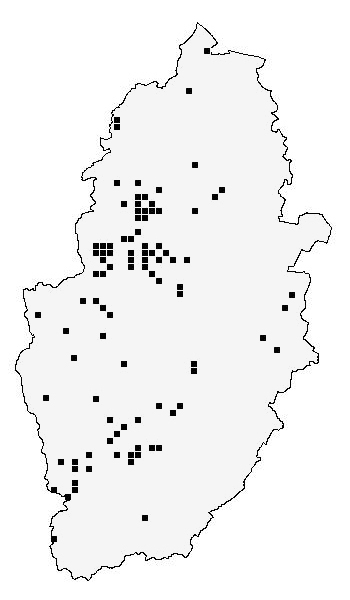 |
||||||||
| Formerly called Forest Bug, this is largely a species of woods and forests, but it is equally as likely to occur in mature parks and occasionally in well planted gardens with some mature trees nearby. In Spring, the nymphs can be often found sunning themselves on the trunks of deciduous trees. The adults are best recorded by beating the lower branches of a range of deciduous trees. | |||||||||
|
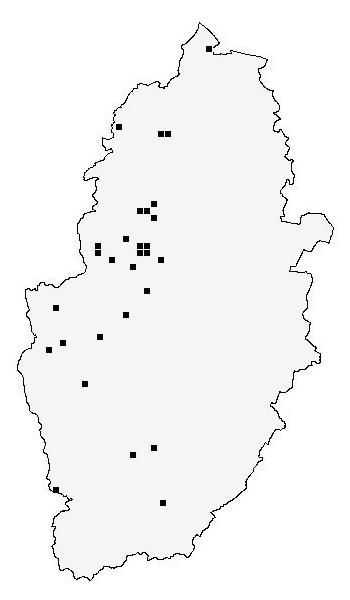 |
||||||||
| The most southerly known sites in Nottinghamshire are Toton and Netherfield Lagoons, but once again, there are no records from the entire eastern-half of the county, or from sites lying on clay-based soils. Always showing a preference for low vegetation, it is best found by sweep-netting suitable sites or by visually searching low vegetation. | |||||||||
|
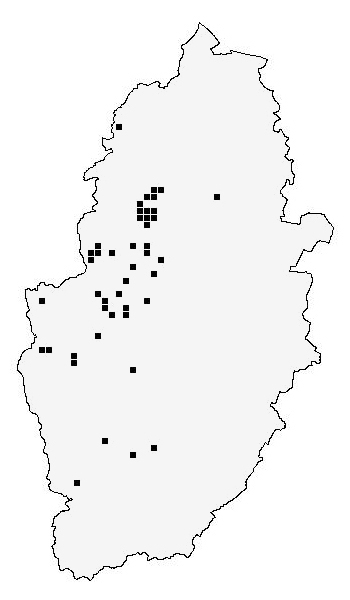 |
||||||||
|
There are few known sites for this species from anywhere in south
Nottinghamshire, but there are records from Attenborough NR, Colwick CP,
Netherfield Lagoons and Nottingham's Rock Cemetery, which is
adjacent to the Forest Recreation Ground in central Nottingham. Gorse Shieldbug is not widely recorded across Nottinghamshire, due to the distribution of the host plant. Gorse (Ulex europaeus) is preferred, although Broom (Cytisus scoparius) is used at those sites where Gorse doesn't occur. Both adults and nymphs can be found by beating the foliage of either hostplant. |
|||||||||
|
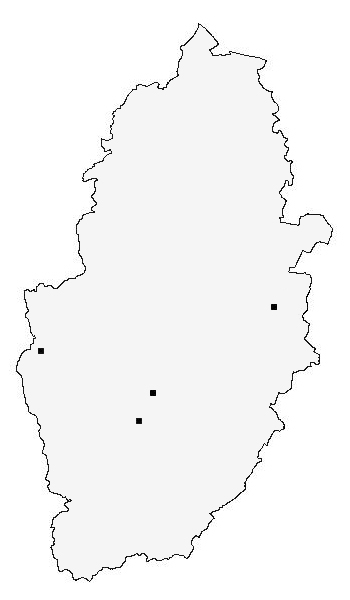 |
||||||||
|
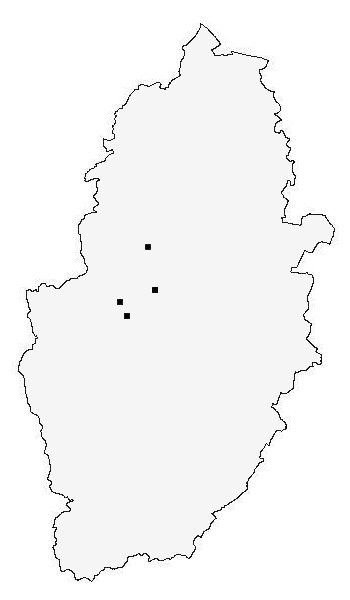 |
||||||||
|
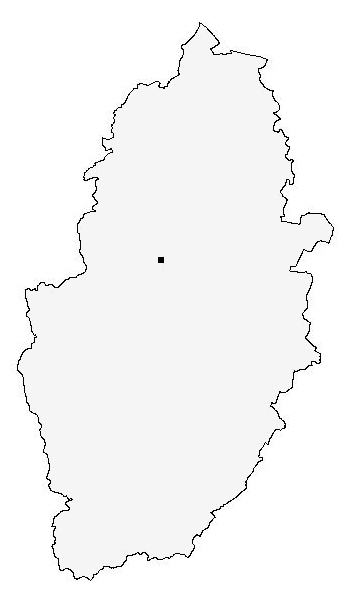 |
||||||
|
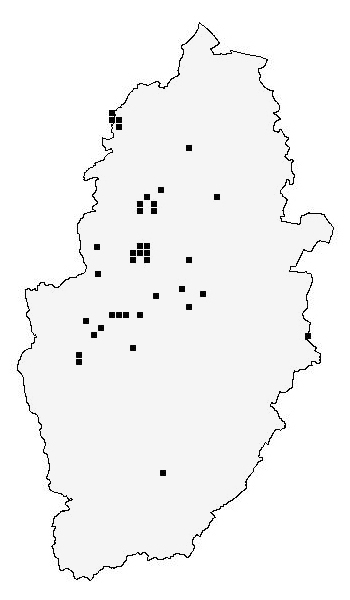 |
||||||||
| ... | |||||||||
| There are no records from anywhere east of the River Trent, other than Stapleford Wood on the Nottinghamshire and Lincolnshire border. Other known sites for this species include Nettleworth Manor near to Mansfield Woodhouse, Wellow Park, Lound Wood near Eakring and the Nottinghamshire Wildlife Trust's reserves at Gamston Wood and Rainworth Heath. | |||||||||
|
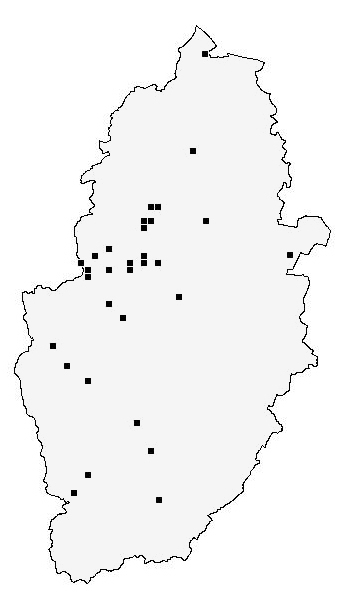 |
||||||||
| ... | |||||||||
| Blue Shieldbug is a predatory species of beetles belonging to the Genus Altica, These are very common, blue beetles found on various Willowherbs growing in a various habitats ranging from woodland rides and hedgerows, damp grassland and heathland. | |||||||||
|
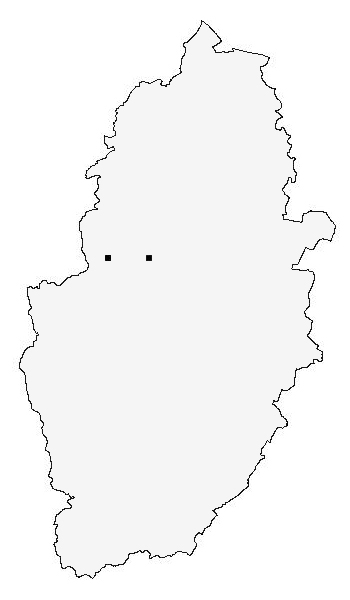 |
||||||||